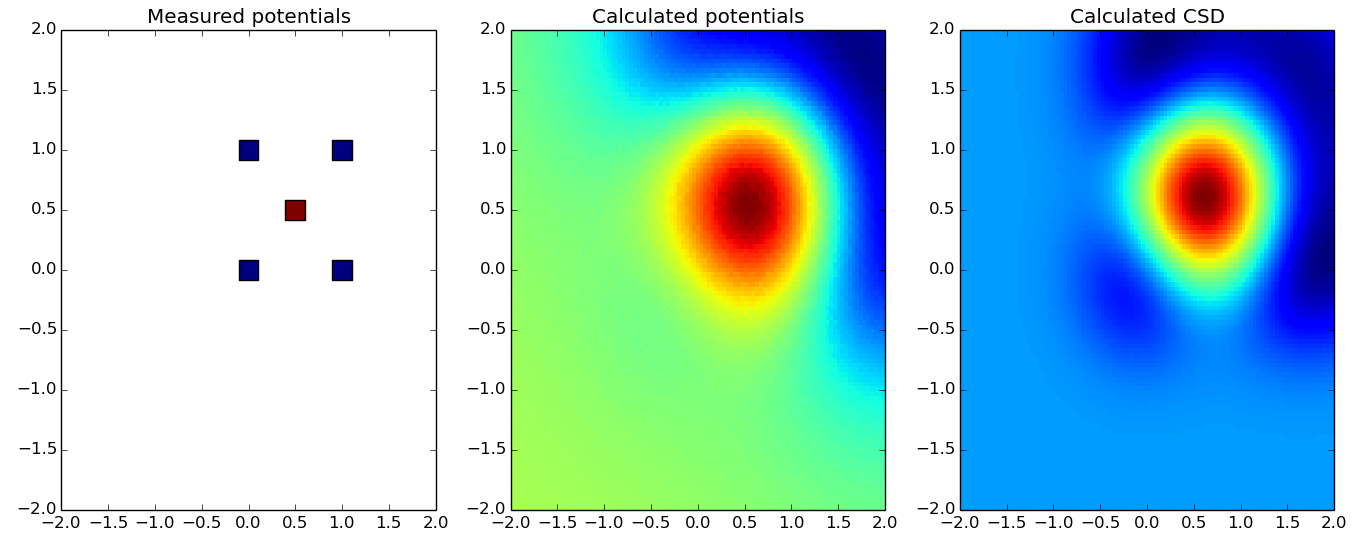I had to pass my exams as quickly as possible and so did I. After two days of my examination period and I am already done!
KCSD2D
The two dimensional variant of KCSD works. A sample reconstruction looks like this:
In [1]: from pykCSD.pykCSD import KCSD
In [2]: import numpy as np
In [3]: elec_pos = np.array([[0, 0], [0, 1], [1,0], [1,1], [0.5,0.5]])
In [4]: pots = np.array([0,0,0,0,1])
In [5]: k = KCSD(elec_pos, pots, params={'x_min': -2, 'x_max': 2, 'y_min':-2, 'y_max':2})
In [6]: k.estimate_pots()
In [7]: k.estimate_csd()
In [8]: k.plot_all()

The current limitations are similar as in the KCSD1D case (no time recordings reconstruction and whole data in RAM) which will be worked upon.
Midterm evaluation
The first part of Google Summer of Code passed so rapidly I barely noticed the midterm evaluation! Passed! :)
Hi Grzegorz Parka,
We have processed the evaluation for your project named Object Oriented Python Kernel Current Source Density toolbox with International Neuroinformatics Coordinating Facility.
Congratulations, from our data it seems that you have successfully passed the Google Summer of Code 2014 - Midterm Evaluation. Please contact your mentor to discuss the results of your evaluation and to plan your goals and development plan for the rest of the program
Greetings, The Google Open Source Programs Team
Actually I’m on the right track following the schedule from my proposal.
Bonus from Google and ACM
There is an additional surprise for us, GSoC students :)
Hi GSoC 2014 students,
The ACM has offered to give you all ACM Student Memberships with Digital Library access (which is the benefits of student membership plus access to the ACM Digital Library, an electronic subscription to both CACM and XRDS) this year. We will be issuing these memberships to you starting 14 July. You will receive an email directly from the ACM confirming your membership then.
(…)
Thanks, Carol
This is like one of the most useful gifts I’ve been given in years! I love reading scientific articles! :D
Next step
Now when I have the 1D and 2D cases working, it’s time to implement the 3D case. This time no dimension is missing so the relation between sources and potentials becomes simply:
The size of basis matrices may now become an issue (the basis source matrix expected size is now in 100’s MBs). We will find out soon!
Also expect some 3D plots soon!

